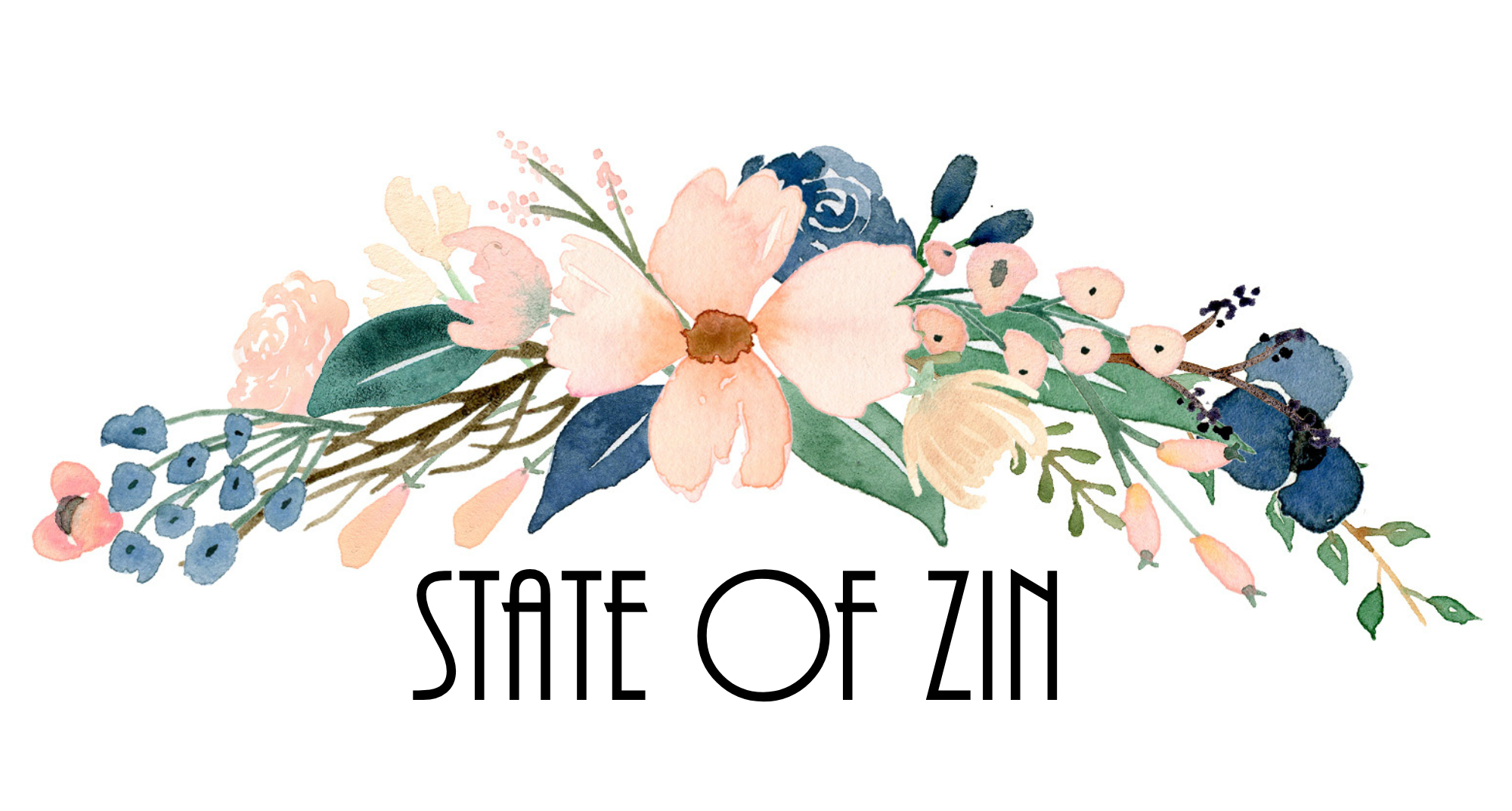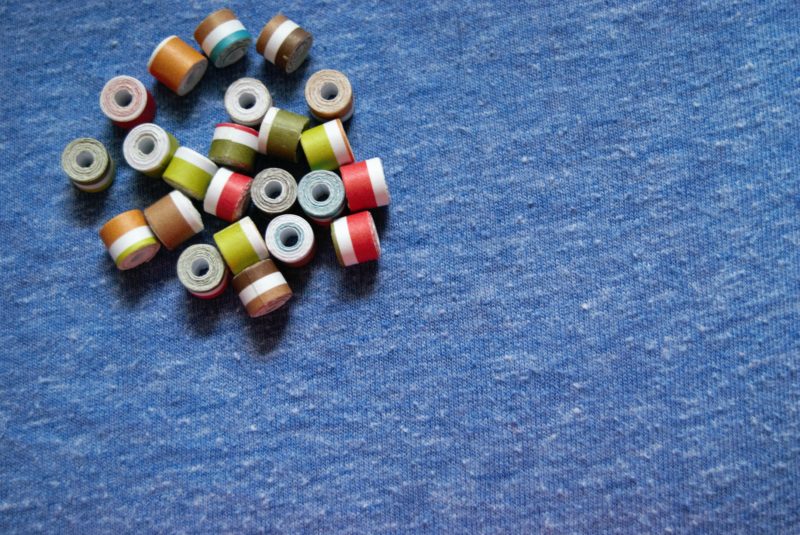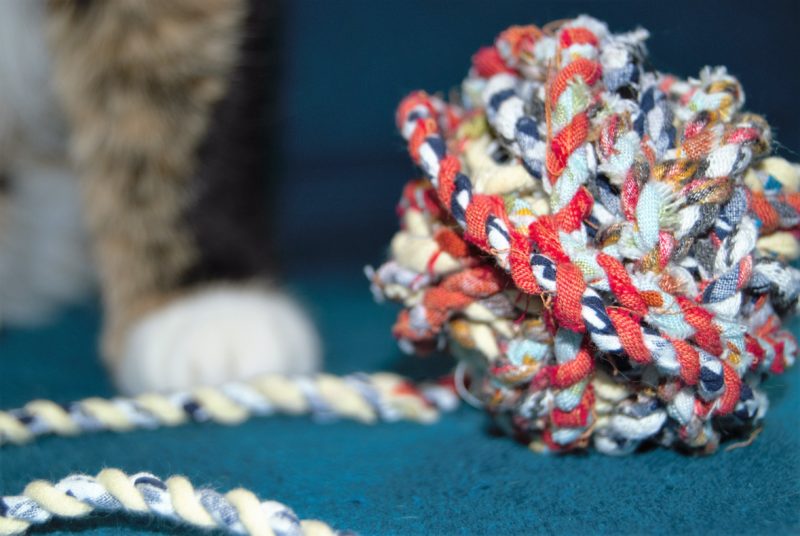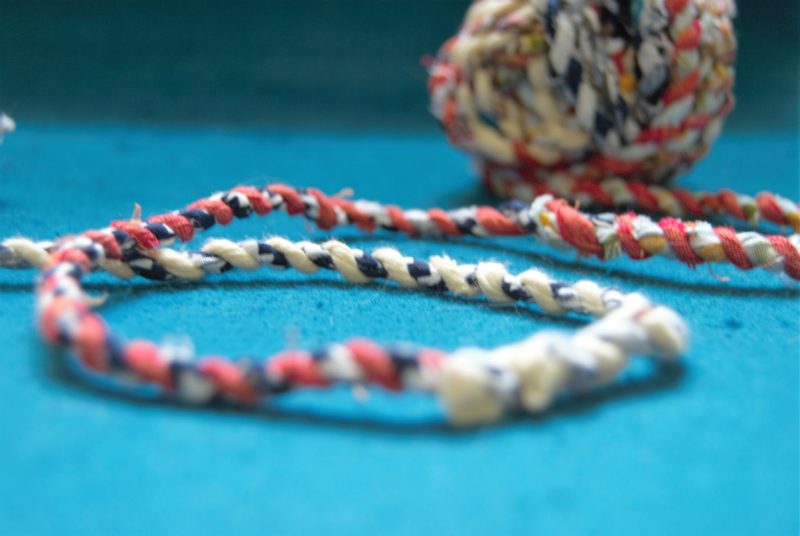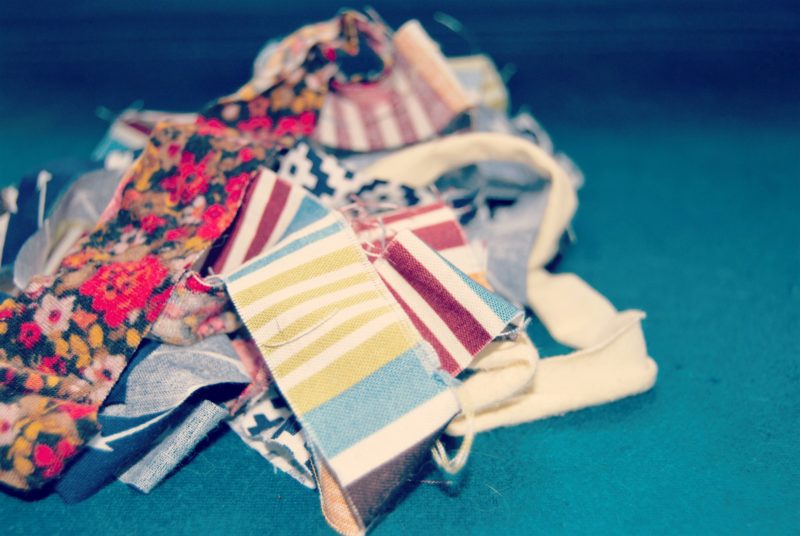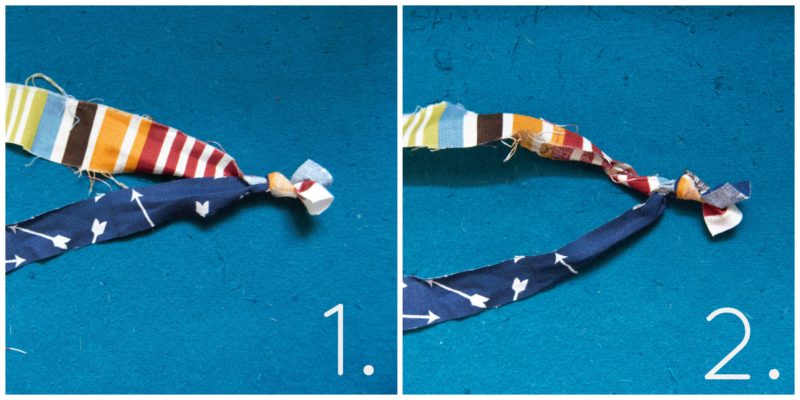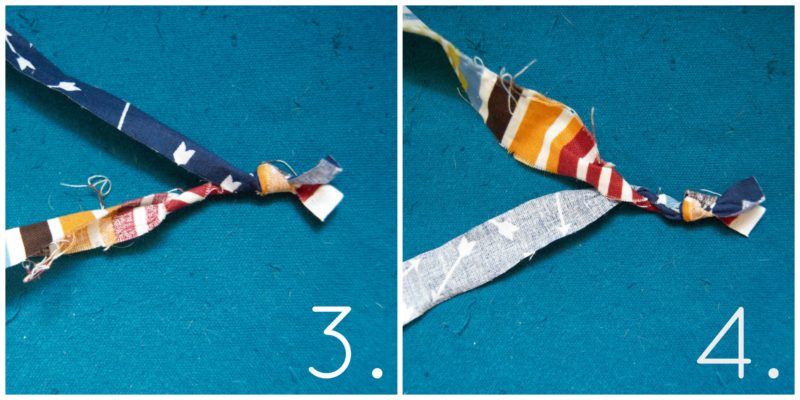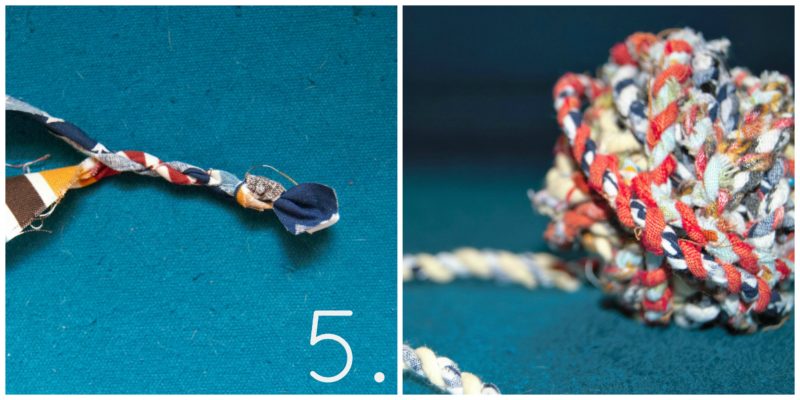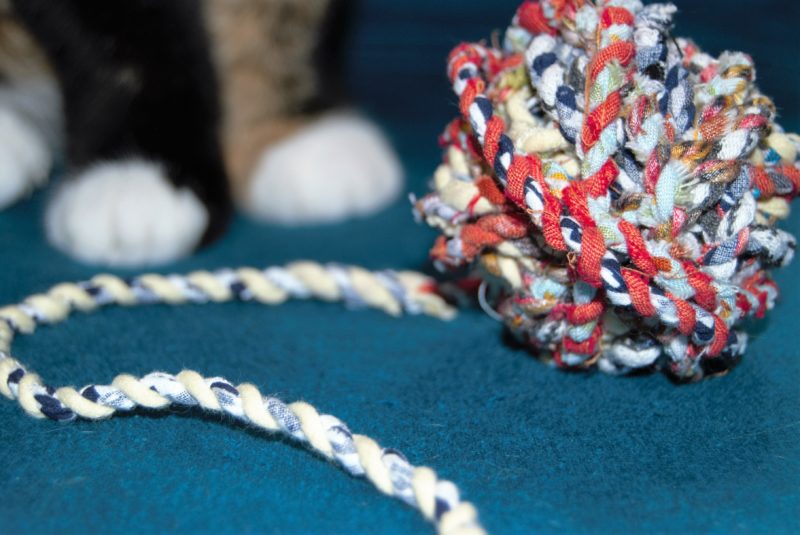Out of all of the jewelry I have made, I definitely get the most compliments and questions about pieces made with paper beads. The best part is that they are practically free to make and incredibly easy. I once had someone that I didn’t know very well for our office Secret Santa and I made a stack of bracelets in her favorite color, and she absolutely loved them! The homemade beads definitely added a more personal touch instead of just buying the bracelet and it was so simple to do. I have experimented with a few shapes and paper styles ( I even tried aluminum foil once!) and have come up with some pretty awesome beads to show off. Jump below the pictures for instructions and tips and tricks for each style of bead!
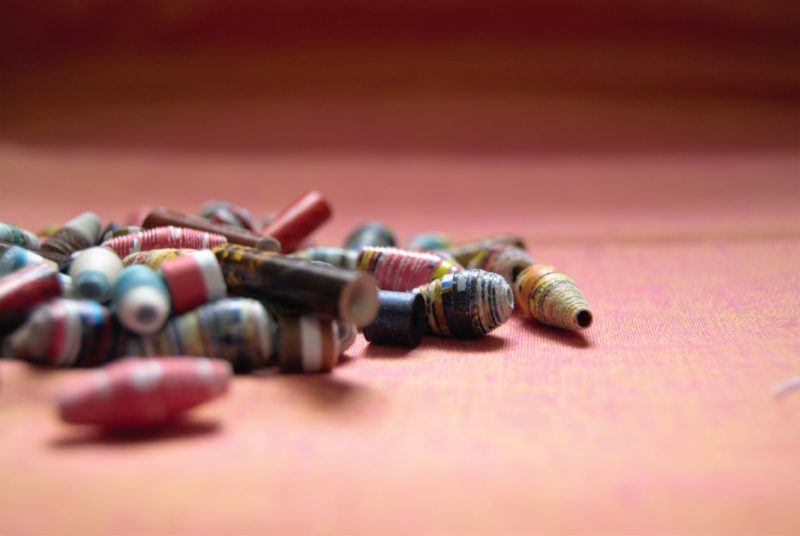
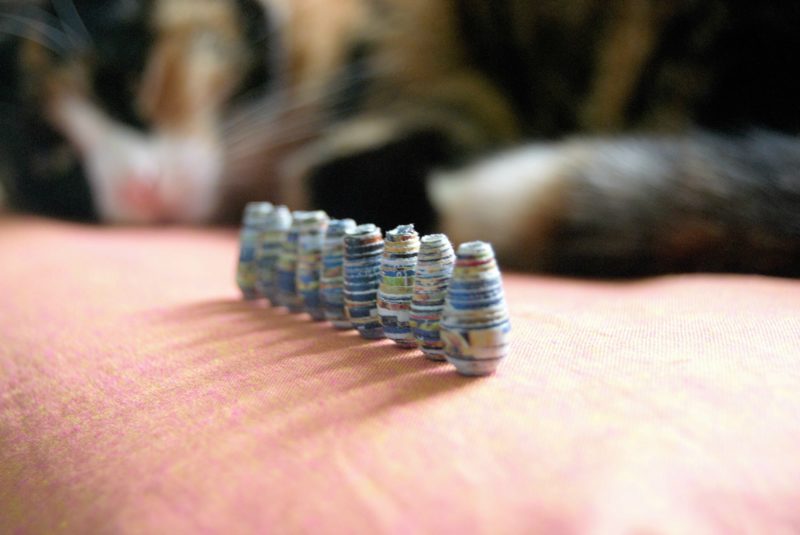
What You Need:
- scissors or exacto knife or a paper cutter
- glue
- ruler
- toothpick (optional)
- cutting mat (optional)
- Dishwasher Safe Mod Podge
(Optional)
How to Make:
- Cut some paper! I pretty much never follow a set template. I lack the patience for tracing and measuring things out. If you are using scissors though, it might be helpful to measure out and draw lines down your paper before cutting. I usually use a paper cutting board and just line up my paper on the ruler as I go. Or if you like the idea of randomly sized beads, go ahead and freestyle it!
- Once you have cut some strips of paper you want to begin rolling the paper, starting with the widest end. When I first started making the beads I would roll the paper around a toothpick. This helps keep the threading hole uniform on all of the beads. Now I usually just roll them with my hands after I get the end started and I tighten it once the bead is completely rolled. Its a little hard to explain but you will see how to tighten them once you actually get one finished.
- Once you have your bead tightly rolled up, you want to place a tiny do of glue right on the tip of the strip of paper and push it down on to the bead. Its ok if there is excess glue, I actually like to kid of spread it around the bead just as an extra precaution.
- At this point if you want to add a finish to the bead you can, I have tried using Mod Podge and it is my favorite cover so far. I usually do them one bead at a time, but I have seen it done where you put all the beads on a string and spray a finish on them or dip them. If you do choose that route, it is very common for the ends of the beads to get stuck to each other which can sometimes cause a little damage. I have also used kabob skewers and put multiple beads on them to cover with Mod Podge, just make sure the beads have a little space in between them so they don’t stick to each other.
- After your beads have dried you can carefully take them off the stick and start crafting with them!
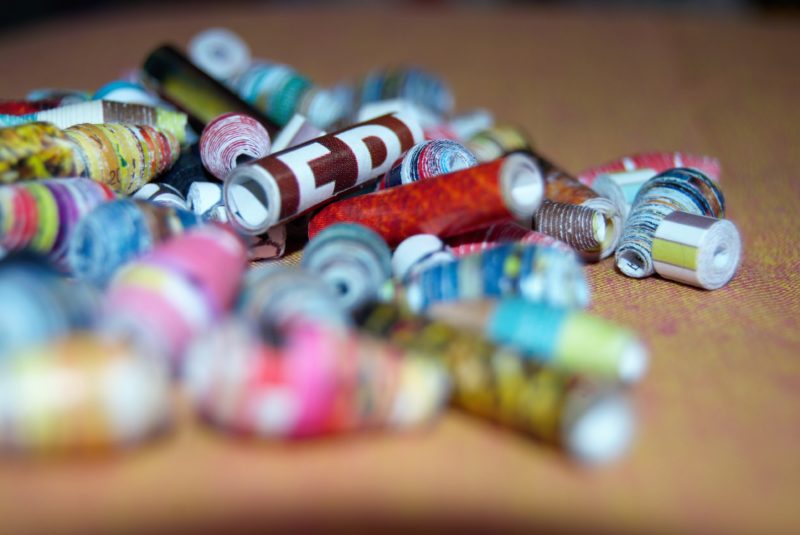
Large Classic Bead
This bead is pretty much the standard paper bead you will see any time paper beads are mentioned. It is essentially a long stretched out triangle. I used scrapbook paper for these beads and made the base of the triangle strip about one inch wide. I usually cut my strips going long ways on the scrapbook paper so the strips are around 12 inches long. If you are using thinner paper you will get a bead that is less round in the center and if you use thicker paper your bead will come out more fatter in the middle.
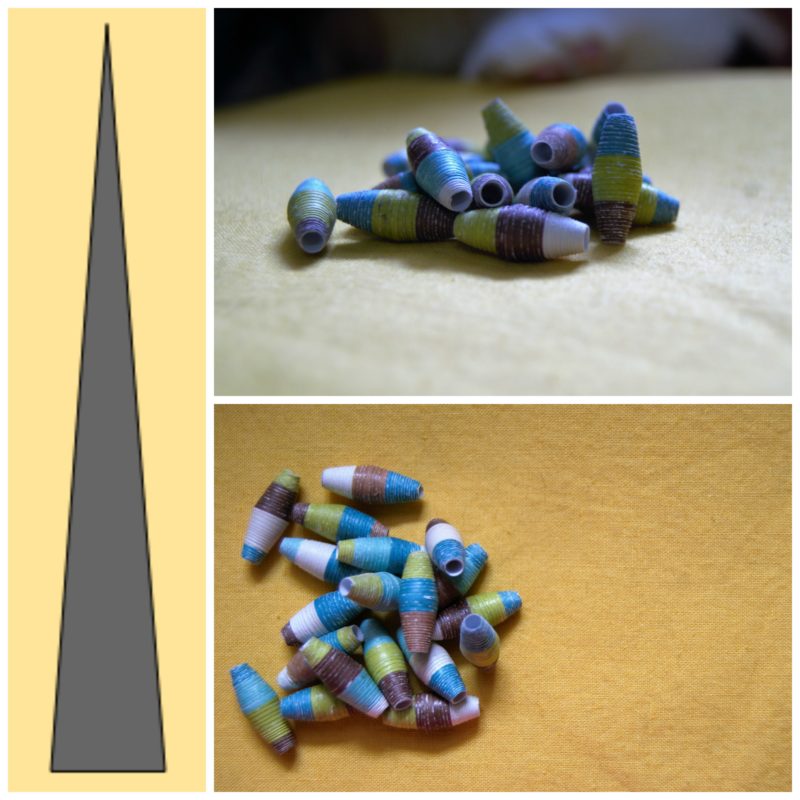
Small Classic Bead
This is just a smaller version of the bead up above. In this version I used magazines as my paper. I cut the short way on the magazine page for this bead, but I made base of the triangle strip much smaller, around 1cm. I like my beads to be more sturdy so cutting them with a smaller base helps make the bead more round and stronger, especially since I used thin paper and cut on the short length of the page.
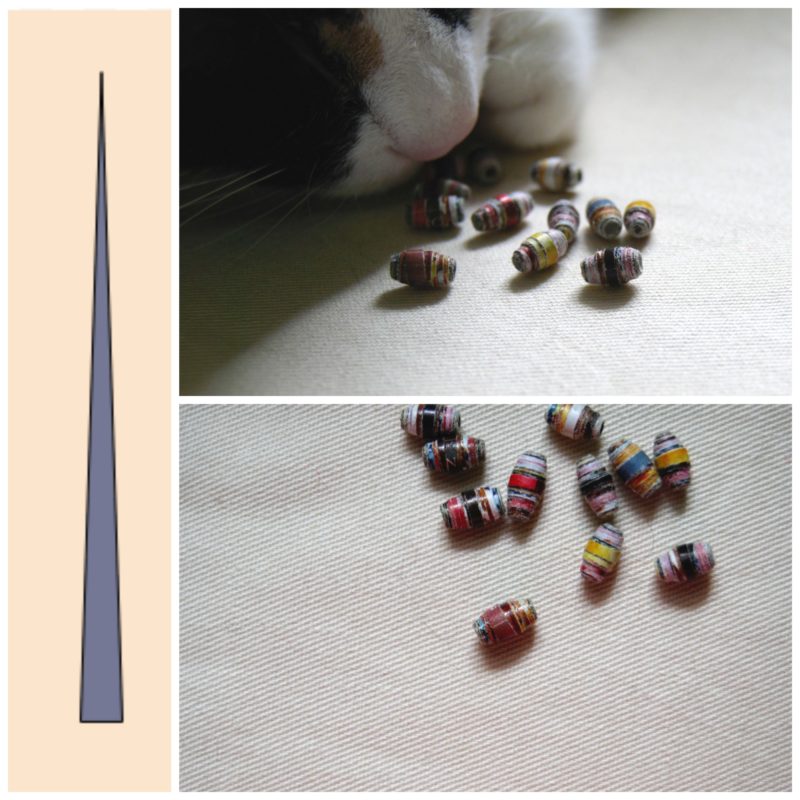
Large Teardrop Bead
These are probably my favorite style of bead as far as looks go. I used the same style of triangle cut for these beads as the classic beads and I used a magazine page for the paper. Once I have the bead rolled and the tip glued down, I carefully pull the fat center down to one side until I get the teardrop shape I want. If stand the bead up on a table and push the fat center all the way down you can get a cone shaped bead. After I position the fat part of the bead where I want it, I apply the Mod Podge to keep it in place. I would also suggest if you want a more pronounced shape, to layer 3-4 strips of paper on top of each other and then start rolling. It will be a little more tricky keeping them together when rolling but the end result is worth it.
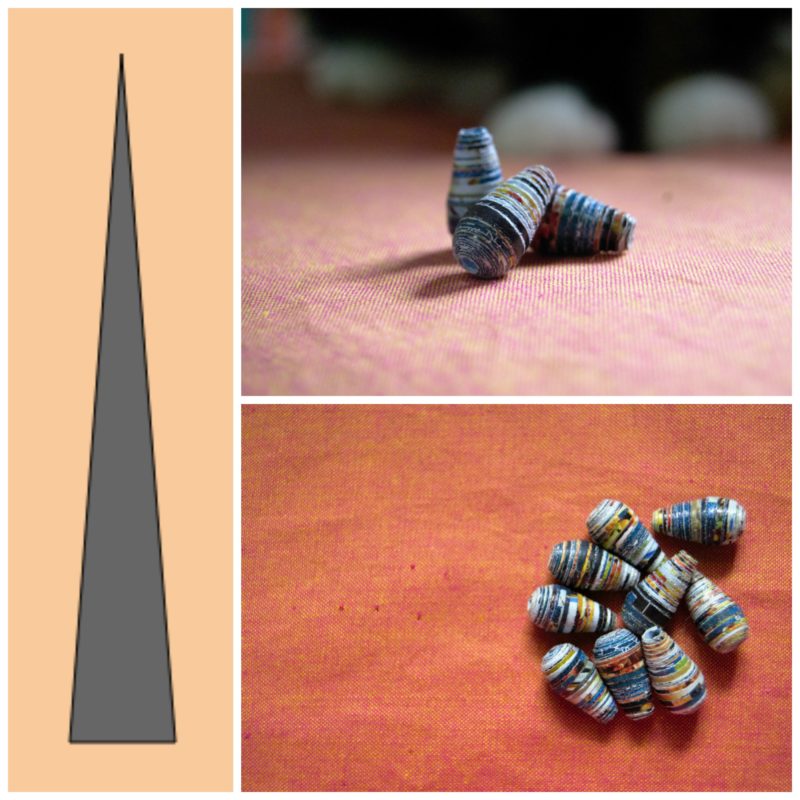
Small Teardrop Bead
This bead follows the same exact steps as the bead above. For these beads I used vellum paper, which is in the same aisle as the scrapbook paper. Its a little thicker and a little less fragile than regular paper. It is also thicker, so I used the short length of the vellum paper with a 1cm triangle base for these beads.
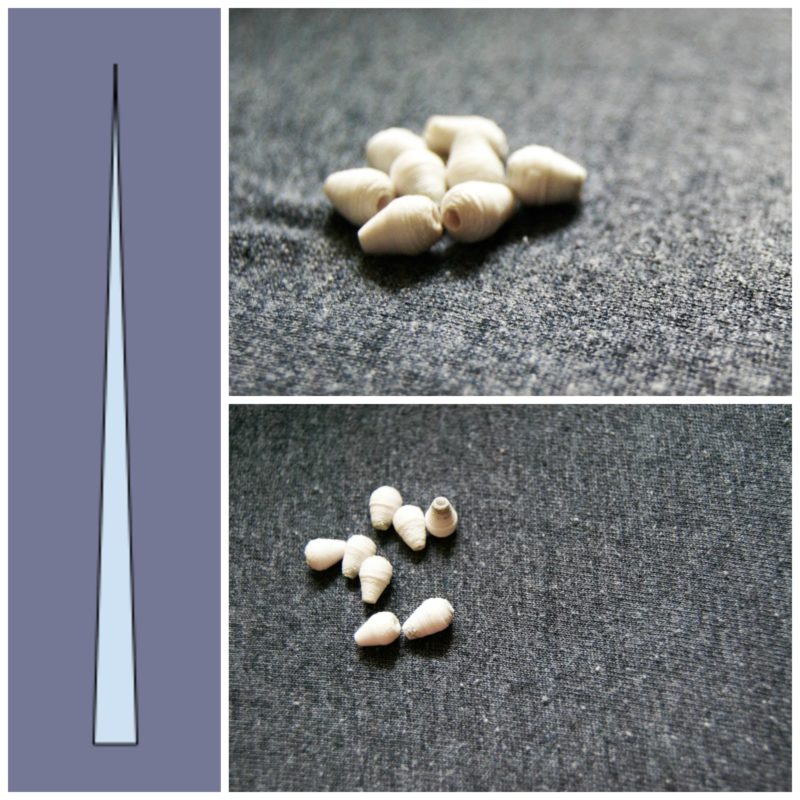
Large Tube Bead
These are the easiest beads to cut and make. You simply cut a straight strip of paper and roll them up! Make sure you put glue on the entire length of the edge of the strip once you have rolled it up. For these I used magazine paper, and I wanted them to be kind of thick so the threading hole is pretty big and the beads are a little less strong since the paper is so thin.
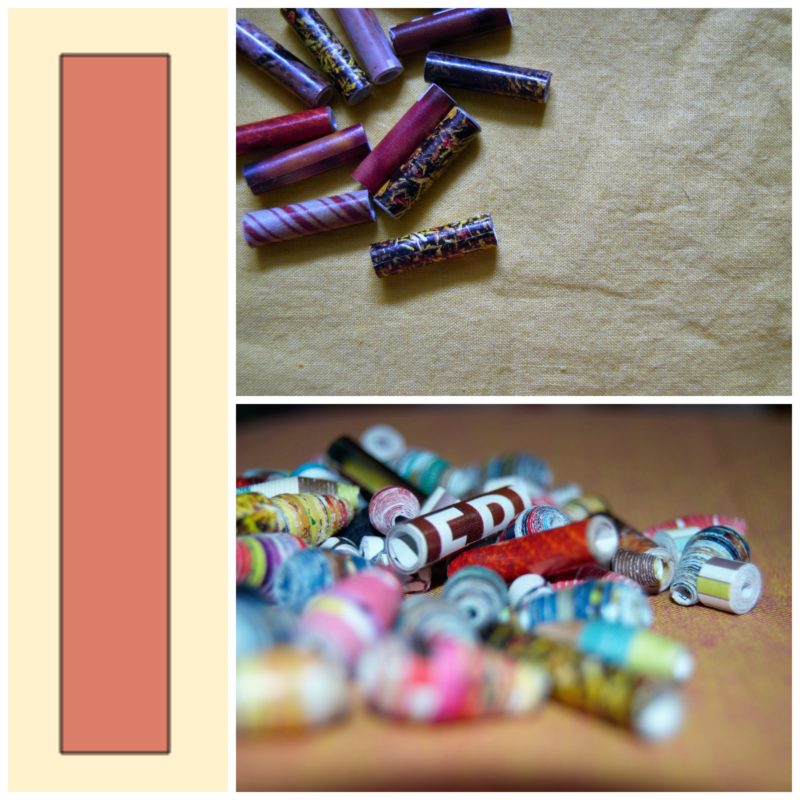
Small Tube Bead
These are made just like the ones up above but I used scrapbook paper. Because I wanted these beads to be super strong and solid I still cut long ways on the scrapbook paper and made the width of the strip about 1cm wide. If you have a square sheet of scrapbook paper, be mindful of the pattern on the page and how you want the finished bead to look. With the tube beads you actually see some of the pattern. I used a striped page for these beads and chose to cut along the strip pattern instead of across it. If I would have cut across the pattern, the beads would have ended up with a bunch of little bars across them instead of one continuous line all the way around.
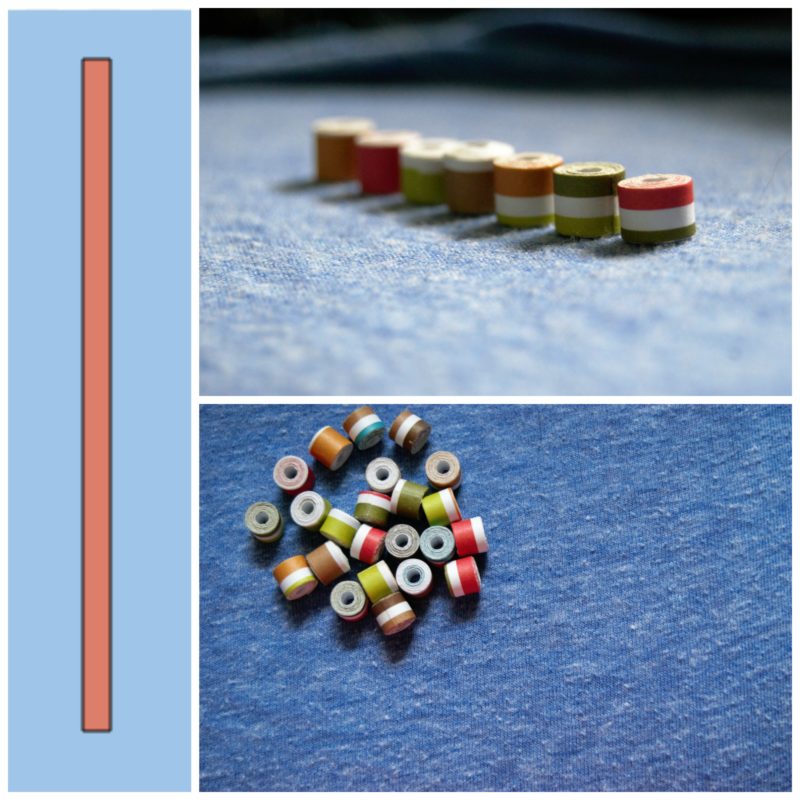
Helpful Tips:
Experiment with all types of paper and sizes to see what works best! I cut a crazy tiny sliver of paper once to see if I could make a paper seed bead. It came out great! But it was a lot more work trying to work with that tiny of a bead so I quit after one…
You can paint the beads! I have quite a few beads where I paint half of the bead metallic colored. I have even seen some cool ones where they paint the tips of beads in a silver or gold to make them look like they have metal caps on them.
You can find all kinds of tools online to help roll the beads or you can just roll them by hand which is my preferred method.
And lastly but definitely not least! I like to put some kind of coating on the beads when I am finished. It helps make the beads a little more sturdy. I personally like anything from Mod Podge, and their Dishwasher Safe Mod Podge is currently my favorite for just about any project I do. Even though you might put some type of coating on these beads, they are in no way waterproof, so please don’t go jumping into any pools, lakes or oceans with your new pretty creations on!
